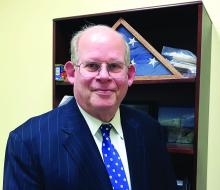Seeking novelty is central to adolescence; experimentation is how they explore their identity, exert independence, and establish deep and connected relationships outside of the family. Research over the past 2 decades has demonstrated the neurobiological changes that underpin this increase in sensation seeking. Most adolescents are very good at assessing risk but are willing to tolerate higher levels of risk than adults in the pursuit of novelty.1 If their knowledge base is limited or inaccurate, as is often the case with drugs and alcohol, accepting higher risk becomes more dangerous. Adolescents are more likely to trust their peers than their parents, but their pediatricians still have authority and credibility.
While there is ample credible information online (from the National Institute on Drug Abuse and the Substance Abuse and Mental Health Services Administration’s excellent websites, which can be recommended to teens), marijuana and hallucinogens (LSD and psilocybin) bear special discussion here because of changing legality and their potential medical utility. There is an emerging impression of safety with both; however, policy changes and for-profit marketing may not reflect the actual scientific evidence. You have the opportunity and authority to complicate your patient’s thinking by discussing the evidence supporting their medical utility, and the emerging evidence that both types of drugs may pose special risks for their developing brains.
By June 2021, marijuana was legal for recreational use in 19 states; Washington, D.C.; and Guam, and for “medical use” in 36 states and four territories. Entrepreneurs and activists have made spectacular claims that marijuana is effective for the treatment of everything from insomnia to PTSD, but the reality is less impressive. Of course, marijuana remains a schedule I drug under the federal Controlled Substances Act (1970), which has made it difficult for researchers to perform randomized controlled studies concerning treatment or risks.
However, there are a growing number of randomized controlled trials with synthetic cannabinoids (dronabinol and nabilone) and a (legal) drug derived from cannabis (cannabidiol or CBD, as distinct from the other active ingredient, tetrahydrocannabinol). There is Food and Drug Administration approval for CBD for the treatment of epilepsy in Lennox-Gastaut or Dravet syndrome in patients aged 2 years or younger, and for the synthetic agents for the treatment of chemotherapy-related nausea and vomiting in cancer patients and for the treatment of weight loss and muscle wasting related to HIV/AIDS. That’s it. There is some evidence that these agents may be effective for the treatment of muscle spasticity in multiple sclerosis, chronic pain of many etiologies, Tourette syndrome, insomnia related to multiple sclerosis and chronic pain, and possibly PTSD. But there have been multiple studies that have failed to demonstrate efficacy (or have demonstrated exacerbation) for a host of other medical and psychiatric problems.
While the evidence for marijuana’s medicinal uses is modest, there is substantial evidence that its use in adolescence carries risks. It is an addictive substance and regular use is associated with sustained modest cognitive impairment (a loss of up to eight IQ points in the clinically dependent) and higher rates of anxiety and depressive disorders. As with other substances, use before the age of 18 substantially raises the risk (as much as sevenfold) of developing addiction than the same rate of use in adulthood. The rate of schizophrenia in adolescents with heavy marijuana use is between six and seven times greater than in the general population, whereas similar adult use does not have this association.2,3 Studies in rats have demonstrated that use during adolescence delays and permanently changes the maturation of the prefrontal cortex, an area of the brain that is essential for complex decision-making, sustaining attention, abstract reasoning, and impulse control.4 While we do not fully understand the exact nature of these changes, there is good reason to believe that regular marijuana use in adolescence leads to disruption of critical brain development and cognitive or even psychotic consequences. It is worth noting that the potency of many commercially available marijuana products is much higher than those that were studied, raising the risk and uncertainty further.
Hallucinogens, or “psychedelics” (from Greek for “mind manifesting”) are a class that includes LSD and psilocybin (a chemical found in over 200 species of mushrooms). They precipitate visual and auditory “hallucinations,” a loss of sense of self, and a sense of awe that may be transcendent or frightening. While psilocybin was used by many indigenous cultures in religious ceremonies, LSD was synthesized by a chemist at Sandoz in 1938 and made widely available for study until it was classified as a schedule I drug by the 1970 Controlled Substances Act. They are not addictive. Early research demonstrated promise in the treatment of alcohol dependence and several psychiatric conditions (including other addictions and treatment-resistant depression). Research resumed in 2018, demonstrating promise in the treatment of depression related to terminal illness. Research has also concerned the nature of consciousness and spiritual experiences. Hallucinogens have become popular in certain fields (high tech) as a means of optimizing creativity and performance (“microdosing”). There is modest evidence that use in people with a family history of psychotic illness may precipitate sustained psychotic symptoms. Regular use may further increase the risk of persistent psychosis and adolescent users of multiple substances are at high risk for regular hallucinogen use. Adolescents may think that ketamine, phencyclidine , and 3,4-methylenedioxymethamphetamine are also in this category, although they are different and considerably more risky drugs. Overall, these agents show therapeutic promise, but unless your young patients are facing depression related to a terminal illness and until we learn more from studies, the potential risk to their developing brains outweighs any potential benefits.
Aware of this information, you are ready to ask your adolescent patients about their drug and alcohol use and knowledge. Using phrases like “when did you first try ...” can increase the likelihood that your patients will be forthright with you. Or start by asking about what their friends are trying and talking about. Be curious about any drug and alcohol use at home. Find out what they are curious about, whom they trust, and where they get their information. Then you can offer your information about the dramatic changes happening in their brains (just like the rest of their bodies) and the special risks of drug use during this window of brain development. Acknowledge that the risks of marijuana use in adults may very well be lower than the risks of regular alcohol use but remind them about how their brains are different than those of adults. Delaying use until they are 18 (or ideally in their mid-20s when most brain development is complete), can dramatically lower these risks. For adolescents with a family history of addiction, psychosis, or mood and anxiety disorders, discuss the additional risks that drugs may present to them. And for those adolescents who acknowledge very early (before 13) or heavy use, be curious with them about whether they might be trying to “feel better” and not just “feel good.” Screen them for depression, suicidality, and anxiety disorders. Those underlying problems are treatable, but their course will only worsen with drug and alcohol use. You are in a unique position to help your adolescent patients make wise and well-informed choices and to get them assistance if they need it.
Dr. Swick is physician in chief at Ohana, Center for Child and Adolescent Behavioral Health, Community Hospital of the Monterey (Calif.) Peninsula. Dr. Jellinek is professor emeritus of psychiatry and pediatrics, Harvard Medical School, Boston. Email them at pdnews@mdedge.com.
References
1. Romer D. Dev Psychobiol. 2010 Apr;52(3):263-76.
2. Szczepanski SM and Knight TR. Neuron. 2014;83:1002-18.
3. Renard J et al. Front Psychiatry. 2018;9:281.
4. Shen H. Proc Natl Acad Sci U S A. 2020 Jan 7;117(1):7-11.



